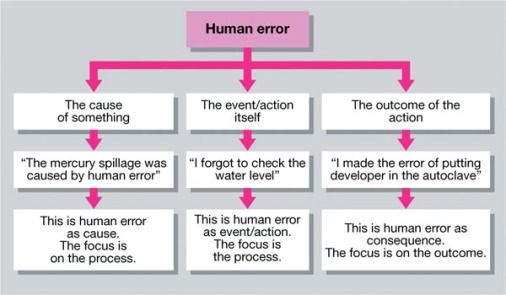The Cutting Edge of Medical Technology Content, Community & Collaboration
To say that the manufacturing industry is huge is to make a huge understatement. It is an activity that spans entire industries and is the lifeblood of many economies, right from advanced to developing ones. Despite the advancement in automation in the processes of many industries, manufacturing is still heavily dependent on human labor.
This makes manufacturing an activity that is prone to human error, because wherever there is human involvement, there is scope for human error. Why is this so? It is because as humans, we are not perfect. With all the care and diligence that one is capable of taking, human errors can somehow creep into a manufacturing process.

Huge costs associated with human errors
There are enormous costs associated with human error in manufacturing, no matter whether the error is intended or unintended. At times, it can affect other activities in the chain and disrupt the process. A human error can sometimes set up a whole chain of errors. Because of this, it is not always possible to make a precise assessment of the loss caused by human error. Yet, rough estimates that the American and British pharma industries suffer put the loss at some $25 billion a year. Human error in this industry leads to unexpected runtime error, resulting in loss of more than a third of the productive time. Human error can result in many losses relating to quality and production and is at the root of many performance issues.
Understanding human error
Even with all the advancements and developments in high end, precise technologies and processes; it is not likely that human error will be eliminated at any point of time. At best, it can only be mitigated and minimized.
Get to the source first

Many a time, the response to a human error is piecemeal and ad-hoc. Instead, the first step towards containing human error should be to locate its source. Human error starts right at the design stage. The prudent approach is to thoroughly understand the root cause and reduce the likelihood of human error by going deep into the variables and causes that bring about human error. Training is an option, but it is surprising that lack of proper training accounts for just a tenth of human errors.
Getting to the root of human errors involves having to control the procedures, training, and workplace environment where many variables that affect human behavior fuse. In order to understand the cause and nature of human error, one needs to directly address the systemic weaknesses to improve or fix them. To do this, it is necessary to get an understanding of human behavior and the psychology of error. Implementation of human factors in manufacturing, the right communication, encouraging continuous practice, the right kind of training, describing the right procedures and offering instructions, facilitating a positive work environment and putting the right processes in place are some of the matters that involve going to the root of human error.
Thorough trainings to help understand human error
A webinar from Compliance4All, a highly acclaimed provider of professional trainings for all the areas of regulatory compliance will offer a complete understanding of the nature of human error, its roots, its psychology and everything else connected with it.
The speaker at this webinar is Ginette Collazo, a human error and human behavior expert who has spent more than 15 years in technical training, organizational development and human reliability areas. Please visit Controlling Human Error to understand the whole autonomy of human error.
Practical approaches to all areas of human error
This webinar seeks to help regulatory and quality professionals get a thorough idea of the factors that cause human error. Towards fostering this, the speaker will offer practical approaches and tools to address human performance issues in manufacturing. She will offer an understanding of the human psychology and behavior behind human errors. This will point to where the weaknesses lie, which will help to address the human performance issues. The aim is to help correct and prevent recurrences of human error.

Ginette will cover the following areas at this webinar:
- Background on Human Error Phenomena
- Importance of Human Error Prevention/reduction
- Training and human error
- Facts about human error
- Human Error as the Root Cause
- What is Human Error?
- How is Human Error controlled?
- Common mistakes Memory failures, Overconfidence, We believe we are above average, Visual Detection, Vigilance Effectiveness
- Types of error
- Human error rates and measurement
- Trending and tracking
- Prediction
- CAPA effectiveness.
For referal Websites
http://learnaboutgmp.com/the-top-7-how-to-reduce-manufacturing-huma...
https://hbr.org/1989/03/the-human-costs-of-manufacturing-reform
http://www.pharmtech.com/human-error-costs-industry-billions
Views: 14
Comment
© 2025 Created by CC-Conrad Clyburn-MedForeSight.
Powered by
![]()
You need to be a member of MedTech I.Q. to add comments!
Join MedTech I.Q.